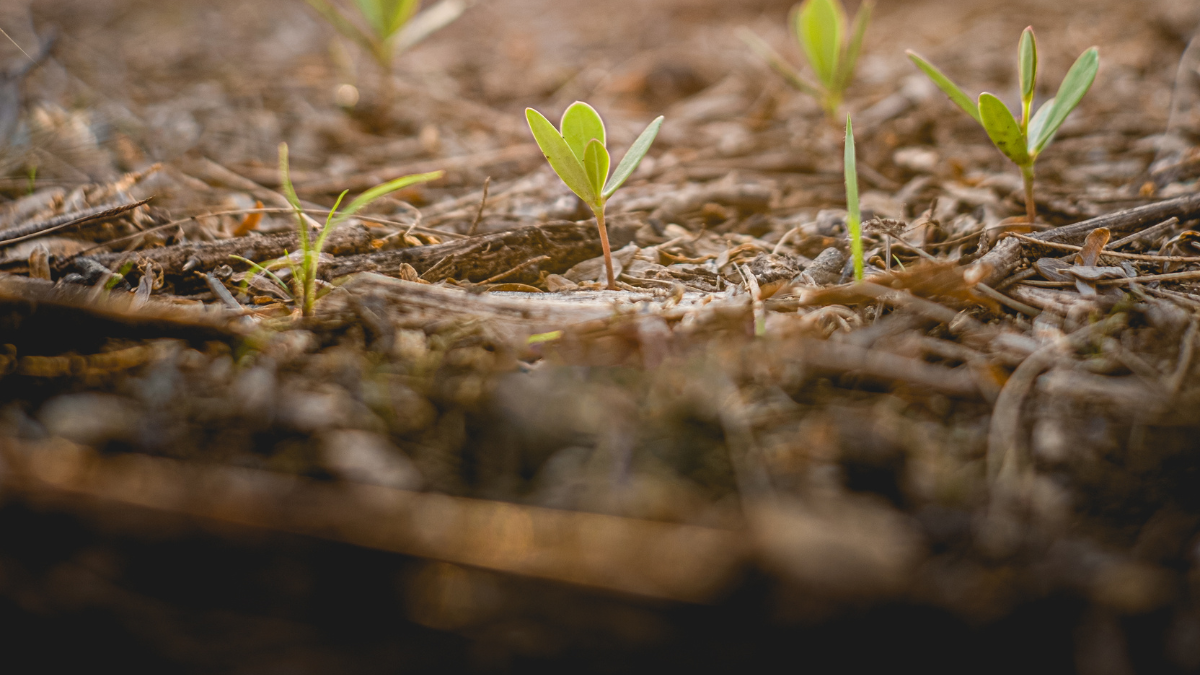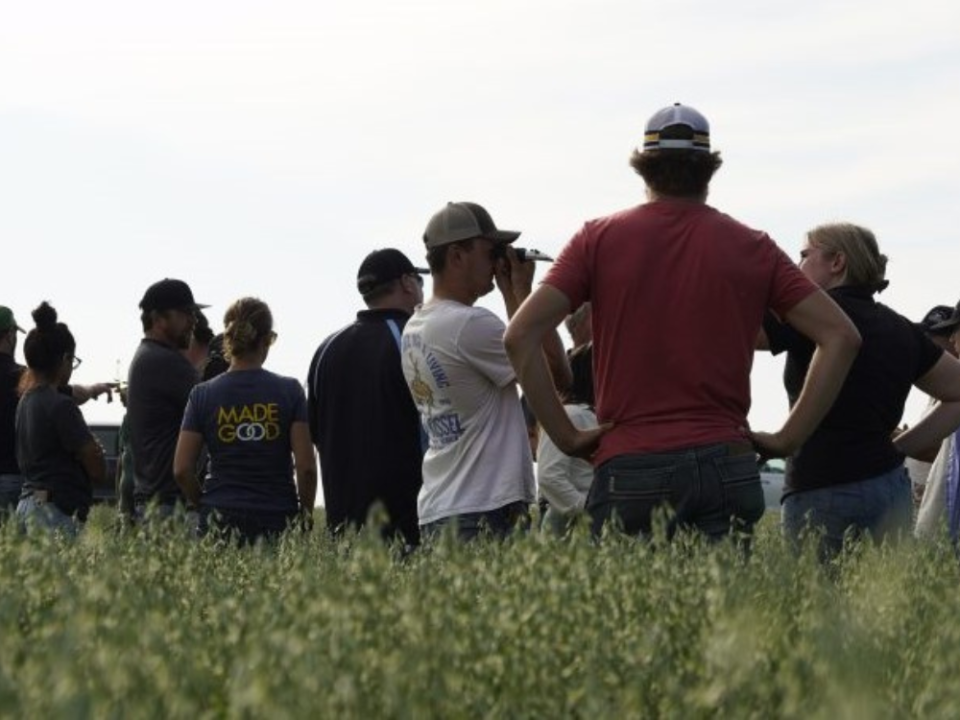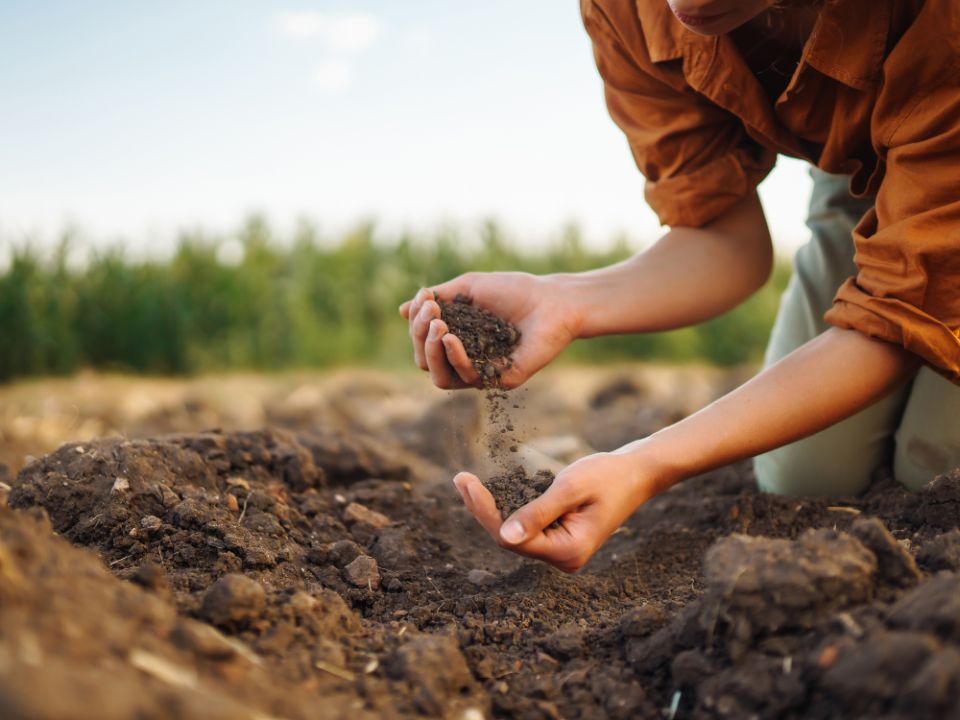Soil: Shaped by Nature, Serving Humanity, and Deserving of Appreciation

In Recognition of Truth and Reconciliation Day
September 28, 2023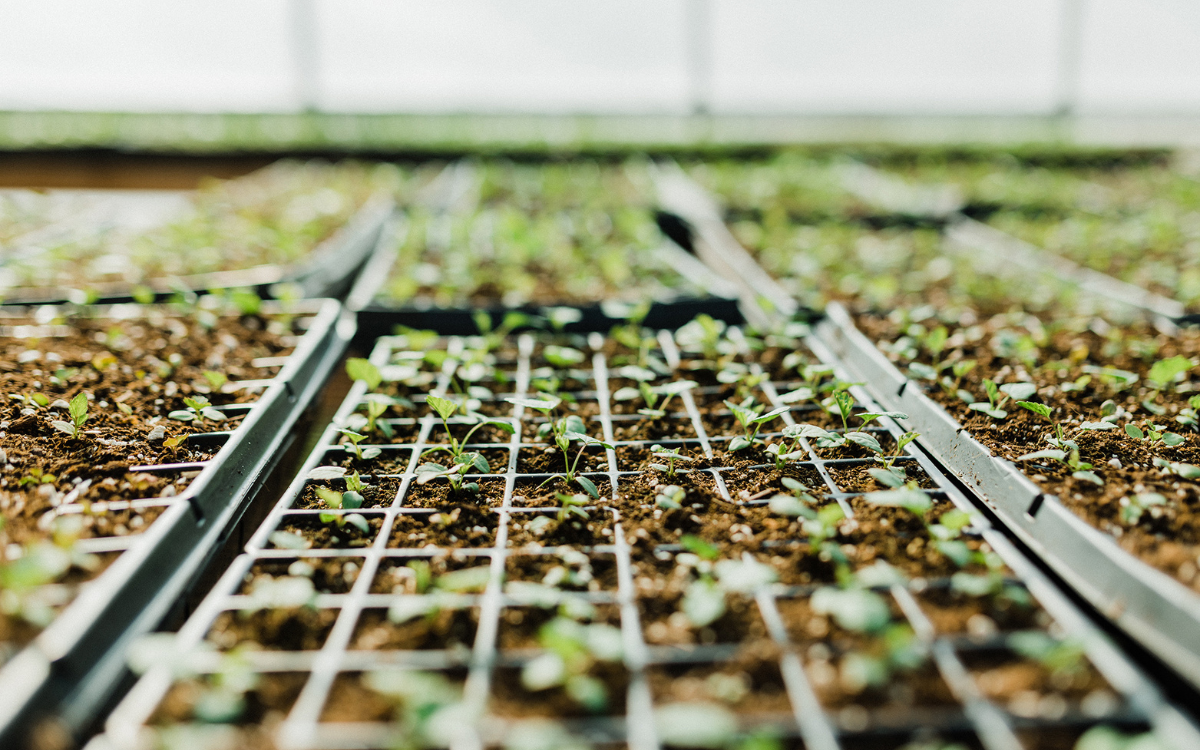
Herbs and Organics – The Perfect Pairing
February 13, 2024Soil: Shaped by Nature, Serving Humanity, and Deserving of Appreciation
By Dr. Andrew Hammermeister
Growing up on a mixed farm in Saskatchewan (SK) offered plenty of opportunities to connect with soil, however, I had little recognition of how valuable our soil resource was. Mostly, I would be playing with ‘dirt’ as a child, and getting ‘dirty’ from working in the fields as I became older. I really had little appreciation for the soil beneath the surface aside from when digging a posthole. Of course, when operating equipment I would sometimes notice the tractor was pulling harder in some areas than others, the ground was softer or perhaps saline in some spots but not others, and the soil was thinner on the top of hills.

Photo. Soil is any naturally-occurring, unconsolidated (loose) material on the surface of the earth, which will support plant growth. Here we see the thin layer of soil over geological deposits on the shore of the Minas Basin in NS. (Photo source: A.M. Hammermeister)
It was not until I went off to the University of Saskatchewan that I realized that soils and their properties could be greatly different across the landscape, that it in itself provided a historical record of climate and geology, and that our management could have significant impacts on it. We first learned about the factors that influenced soil formation since the last glacial retreat some 10,000 years ago. As the glaciers retreated they left behind a ‘parent material’ that could vary, depending on the level of sorting by water and wind, from a mix of sand, silt, clay, and stones to virtually pure stand, sand or clay.

Photo: As glaciers melted and retreated the deposited sediment that could either be a mix of stones, sand, silt, and clay or could be sorted by glacial meltwaters and glacial lake deposits. Photo credit: Ivar Örn Benediktsson, Mulajokul glacier in Iceland
Glacial deposits also varied in the ‘topography’, or the shape of the land, that was left behind ranging from flat land to sloping, to very rolling landscapes. This topography had a big influence on the redistribution of water, where flat or concave parts of the landscape tended to accumulate more water than the tops of hills and steep slopes. This redistribution of moisture influenced ‘vegetation and associated organisms’ that were best adapted to certain landscapes. Certainly as you drive across a natural landscape you will see a gradual (and sometimes abrupt) transition of vegetation from the top of a hill to a depression. This vegetation community, coupled with the soil texture, climate, and chemistry, that varies across landscapes and regions has a tremendous influence on soil properties that shape our agricultural productivity today.
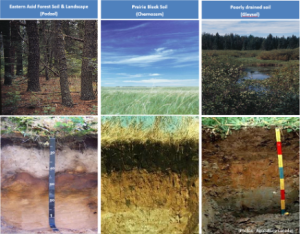
Photo: Different climate, soil parent material, slope position, and vegetation type have resulted in different soils developing over time across landscapes and regions. (Photo source: top centre A.M. Hammermeister, others Agriculture Canada)
Through agricultural production we have disturbed these natural landscapes in many ways, and disrupted the natural processes of soil formation, including clearing of vegetation, tillage, drainage, liming, fertilization, amendment additions, and pesticide application. Some of these disturbances have improved productivity of the soil, while others have resulted in soil degradation that has reduced soil health, productivity, and resiliency. Sometimes our agricultural practices may improve one soil characteristic while still being detrimental to another. Our understanding of the soil has improved tremendously in the last few decades as we recognized that soil health was diminishing through excessive tillage, bare ground, monoculture, and high input use.

This agricultural soil in SK shows signs of good soil health with even rooting, earthworms and dark colour, but also shows evidence of deeper tillage with mixing of subsoil in the topsoil. (Photo source: A.M. Hammermeister)
The pioneers of organic agriculture recognized the soil as the foundation of a healthy food system; healthy soil led to healthy plants, animals, and people. Use of amendments from recycling of organic materials was seen as a valuable way of improving soil biology and maintaining soil fertility and productivity while also reducing reliance on manufactured inputs. Crop rotation, including the use of perennials, green manures and cover crops, were seen as important practices that disrupted pest cycles as well as enhancing soil organic matter and improving soil fertility with the use of legumes. These soil improving practices have been integral to sustainability on organic farms, and when adopted offset the impacts of tillage which was needed for weed control in lieu of herbicide use.
Recognition is growing of the services that soil may provide in supporting not only productivity of crops we use, but also in sequestering and storing carbon, cycling soil nutrients, providing resiliency to climate extremes, filtering water, and supporting biodiversity. With this in mind the concept of sustaining soil health has expanded to also regenerating soil health. Organic agriculture should, by its guiding principles, encourage all farmers to maintain soil health as a minimum while striving to improve it. The economics and sometimes the logistics of scale of production have pressured producers to push the soil’s productive capacity. However, we have seen from both long-term rotation studies as well as long-term organic farmers how important it is to have a farming system that maintains soil health. The suitability of soil building practices on each farm will vary depending on the scale, resources, climate, and current state of soil health. Furthermore, the soil in some parts of the landscape may need more support than others, and so focussing efforts may result in greater impact.
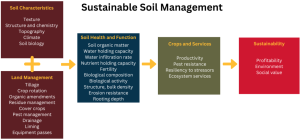
Image: Soil characteristics and land management practices affect soil health and function which ultimately lay the foundation for sustainability. (Image: A.M. Hammermeister)
Finally, appreciating soil health begins with appreciating the soil itself as well as its origins. Taking a walk with a shovel and exploring soils, beyond just the topsoil, at different landscape positions or with different vegetation types is a first step in this appreciation. The next step is to read about soil to better understand its properties. Valuable (and free) resources are listed below.
Appreciating Soil:
- Read about soils and their formation
- Check out maps for your soil
- Dig some holes:
- Your cultivated and non-cultivated land
- Different slope positions
- Different soil type
- Look at the layers of soil:
- How deep are they?
- What colour are they?
- How do they smell?
- Are they saturated?
- Is there a hard pan? How deep?
- Fill your holes!
Soil Resources:
• Visit the OACC YouTube Channel for a 3-part series about soil: www.youtube.com/@OrganicAgCanada
• Digging into Canadian Soils (FREE digital textbook) https://openpress.usask.ca/soilscience/
• Soils of Canada: www.soilsofcanada.ca
• Canadian Soil Information Service: http://sis.agr.gc.ca/cansis/index.html
• Soil Capability for Agriculture maps 1:250,000 & 1:125,000: https://sis.agr.gc.ca/cansis/publications/maps/cli/250k/agr/index.html
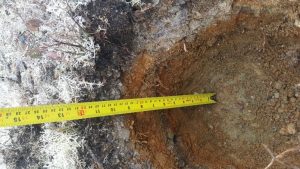
Photo: A shallow, acidic soil in Newfoundland (Photo source: A.M. Hammermeister)
About the Author:
Dr. Andrew Hammermeister is the Director of the Organic Agriculture Centre of Canada and Associate Professor in the Faculty of Agriculture at Dalhousie University in Nova Scotia. He has a PhD in Applied Ecology from the University of Alberta. Andrew has been the Science Director for Canada’s Organic Science Cluster since 2009, the national strategic initiative for organic research in Canada. His research has focussed on organic cropping systems with emphasis on field crops and orchard crops including soil fertility and weed management.


